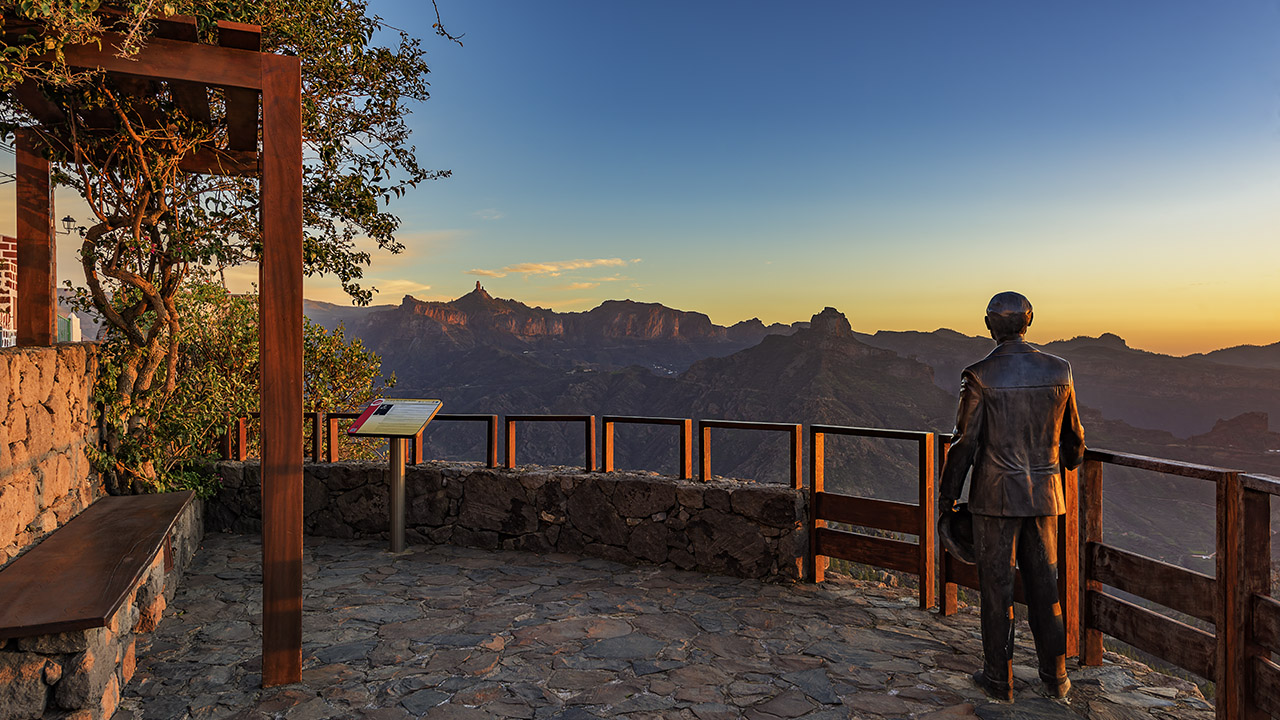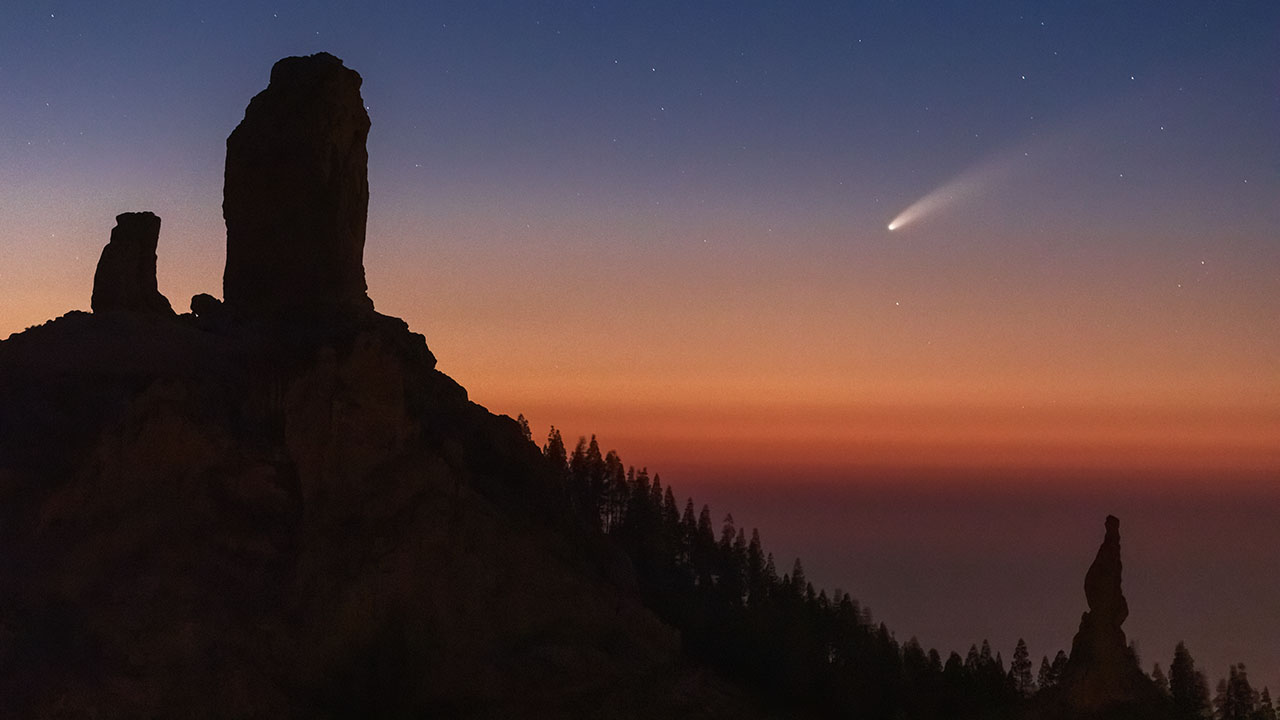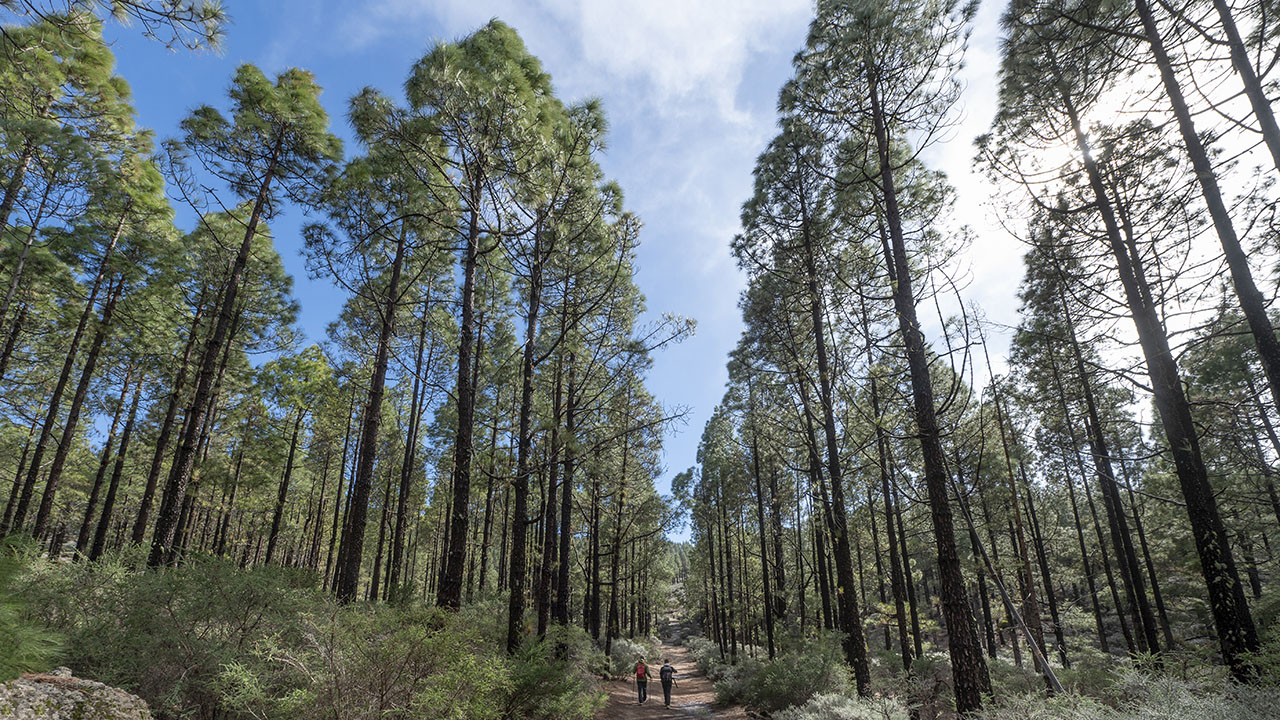Gran Canaria, a land of memory and nature that cast a spell on the world
The Biosphere Reserve and the World Heritage Site of Risco Caído and the Sacred Mountains of Gran Canaria are the very essence and reflection of the island’s unique qualities, acknowledged in these two UNESCO declarations.
Gran Canaria is a book full of age-old stories. It is also a treasure trove of biodiversity with gems glittering throughout the land between the coast and the summit. UNESCO has embraced these archaeological, ethnographic and natural values by declaring almost half its land plus a wide section of the shoreline to be a Biosphere Reserve, and a World Heritage Site in the form of the Cultural Landscape of Risco Caído and the Sacred Mountains of Gran Canaria.
Both nominations reflect the singular nature of Gran Canaria, an island that is home to several worlds. The roots of the Biosphere Reserve and the World Heritage site are woven into the territory, also sharing an inheritance that inspires an increasingly sustainable future.
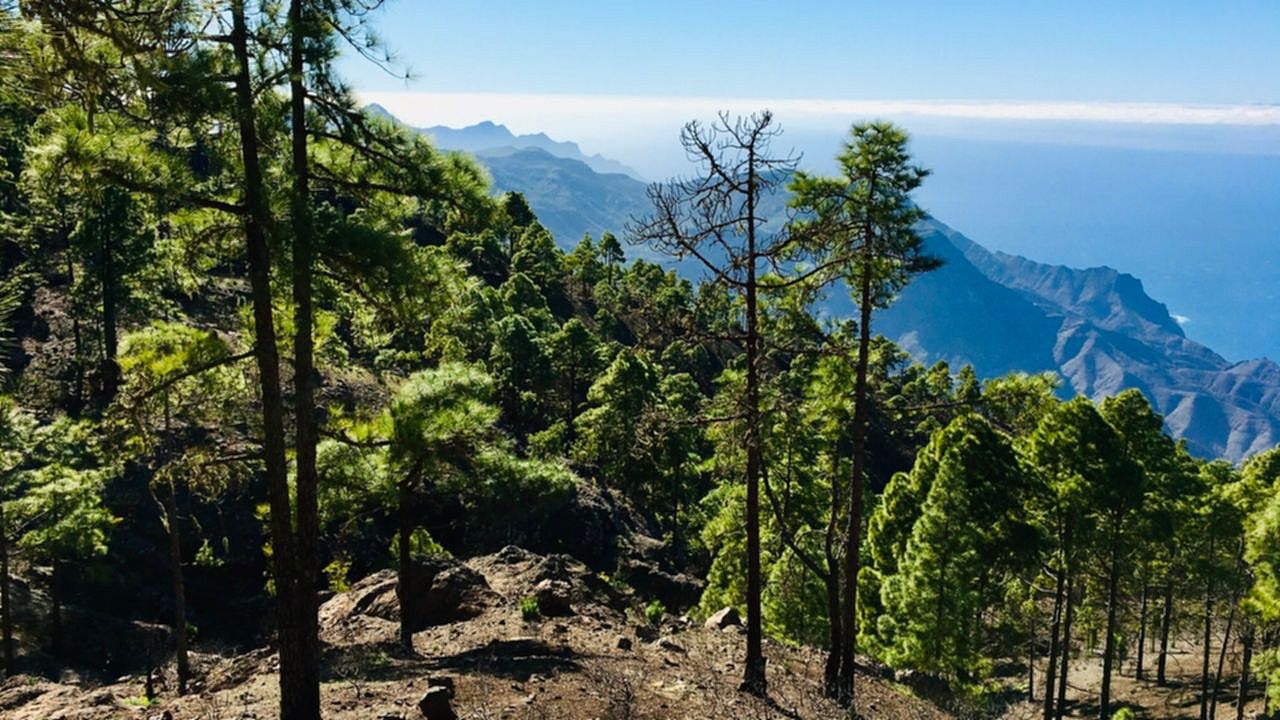
Here, landscape and history conspire to thrill anyone venturing into these vast domains covering 9,500 hectares in Tejeda, Artenara, Gáldar and Agaete in the case of the Cultural Landscape, mainly overlapping with the Biosphere Reserve, which stretches its 65,000 hectares throughout Agaete, Artenara, La Aldea de San Nicolás, Mogán, San Bartolomé de Tirajana, Tejeda and Vega de San Mateo, plus 35,000 hectares of coastline.
People living within the boundaries of this kingdom are custodians of ancient knowledge that they demonstrate each time they plough the land, guide their livestock or mould clay in their hands. There are also stone giants, beams of light dancing between cave etchings or unheard-of plants and animals. Anything is possible in the pages of this book written in the ink of time.
THE CULTURAL LANDSCAPE: A THREAD BETWEEN THE CAVE AND THE STARS
An invisible thread connected cave-dwellers with the night sky. This goes a long way to explain why Risco Caído and the Sacred Mountains of Gran Canaria Cultural Landscape were declared a World Heritage Site, probing the secrets lying in the darkness of the cavities honed out of the volcanic stone in the past and in the stars that light up every night on the island’s peaks.
The extraordinary features at the very summit of Gran Canaria come from a culture that evolved in isolation for over 1,500 years after the arrival of the Berber population groups from North Africa. They developed a new society adapting to the land within this island-shaped chrysalis.
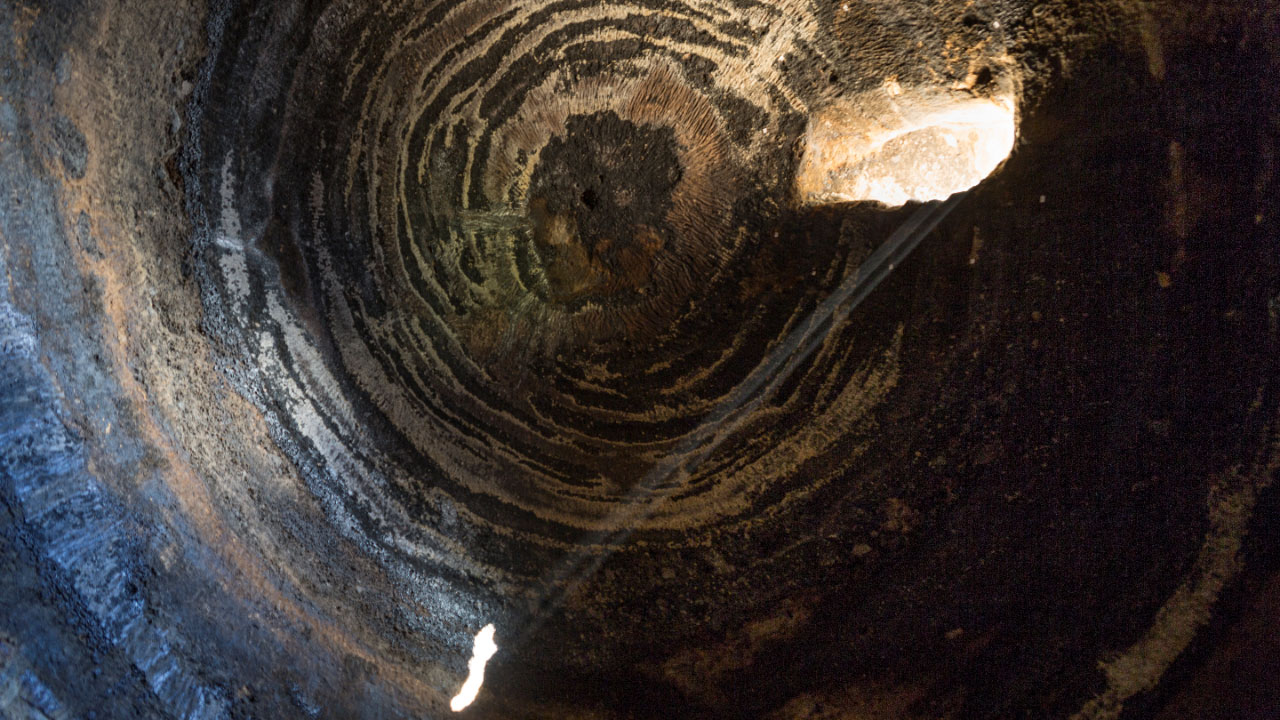
The imprint of ancient Canary society, and its continuity through time, demonstrated by cultural manifestations that remain today, from agriculture to pottery, was the mainstay of the application to include the highlands of Gran Canaria on the UNESCO World Heritage List, singling out exceptional places and events that deserve special care and attention.
The Cultural Landscape lies in the mountainous centre of Gran Canaria. Its decisive, thousand-year-old history takes us deep into the heart of the colossal crater in Tejeda, climbs up Roque Nublo, clears paths through the Sierra del Bentayga, delves deep into the pine forests on the Tamadaba range and drops down into the ravine bed of Barranco Hondo.
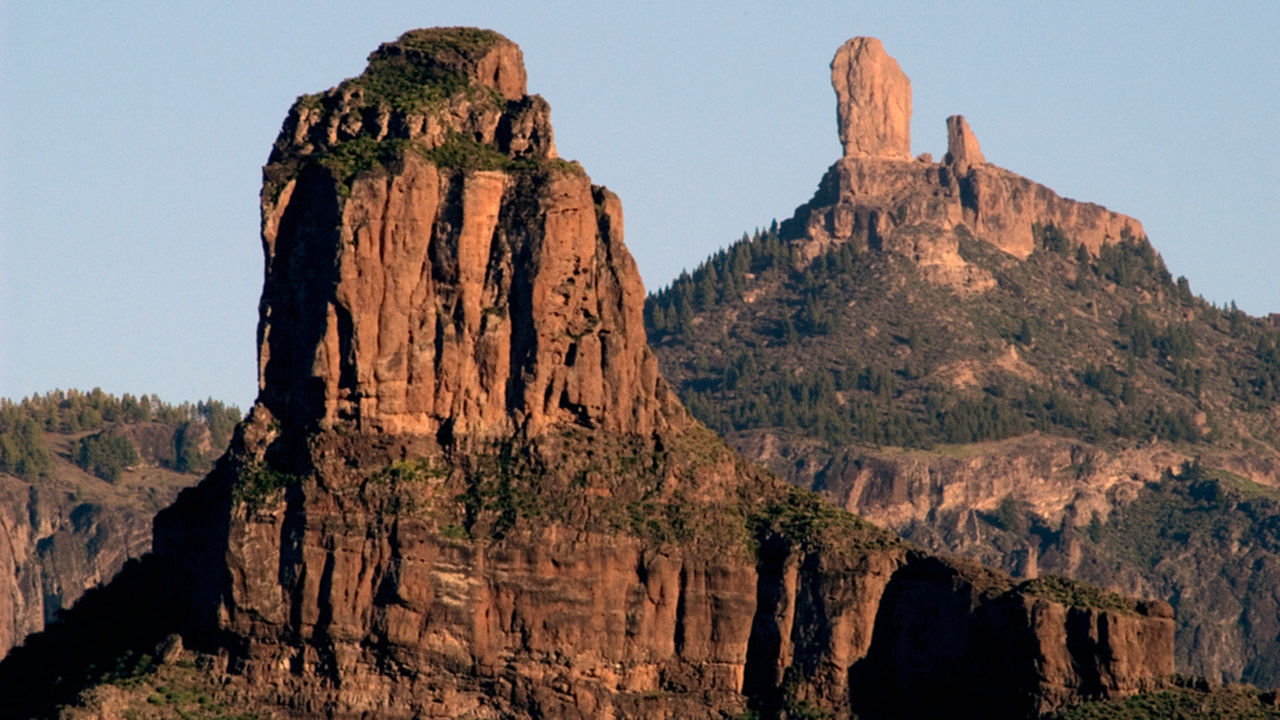
The true dimension of this culture remained hidden in the so-called ‘lost temple’ of the former population of Gran Canaria, the ritual space and astronomical marker of Risco Caido. This cavity excavated out of the shady side of Barranco Hondo has a small opening in its vaulted ceiling that lets in the light from the sun and the moon. At the summer solstice, the beam crosses the walls and lights up the cave etchings in the form of pubic triangles, associated with fertility. The same happens at the winter solstice, in this case with the full moon. The replica of this place and its phenomenon can be seen at the Risco Caído and the Sacred Mountains of Gran Canaria Visitors’ Centre.
The indigenous society looked to the heavens to measure their own lifetime in this world, Gran Canaria in this case. It was also used for essential aspects such as organising farming tasks, etc. Another marker, Bentayga, heralds the exact point when the day begins to steal time back from the night.
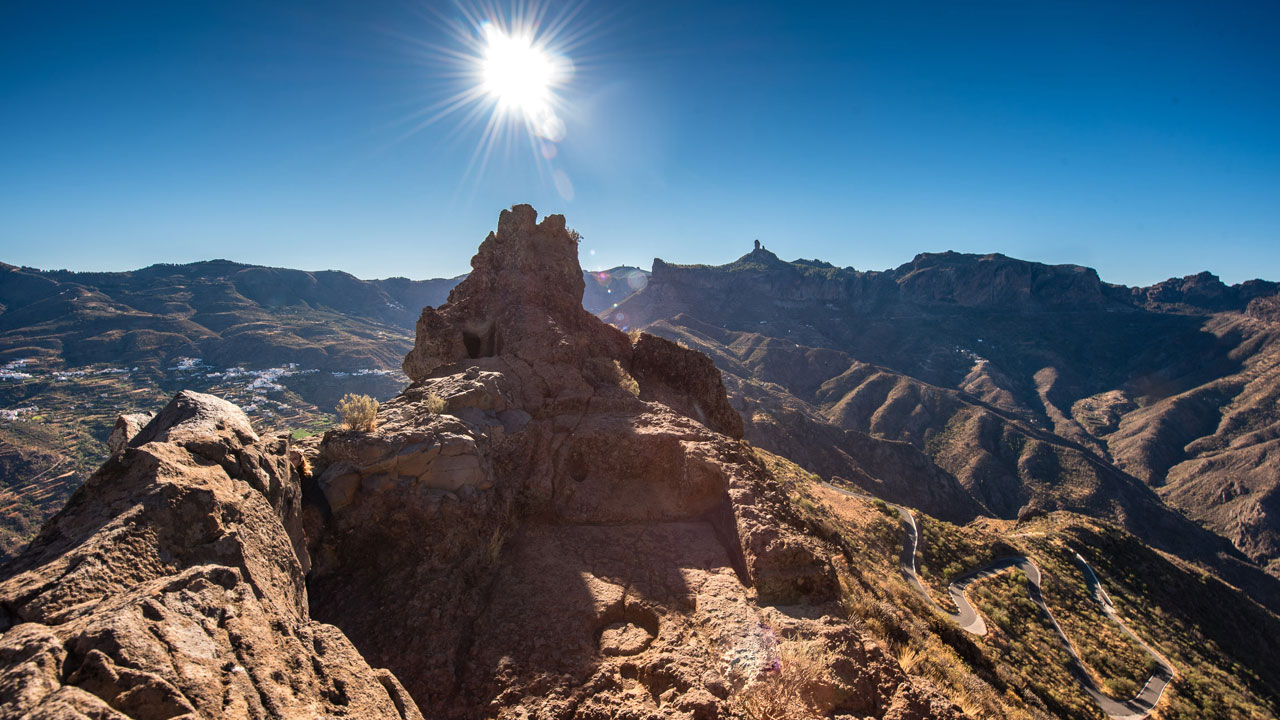
This culture lit up a broad set of archaeological sites such as cave dwellings, temples, fortified grain stores, painted caves and other etchings. They are flashes from a dazzling past that reach our modern eyes and bear witness to the odyssey of ancient island cultures all over the planet.
Furthermore, the survival of certain ancestral traditions and land uses keep this chain intact between the past and the present in Gran Canaria. Links in this chain include transhumance, hand-built pottery, terraced crops, handling water as a scarce resource or using the very same barley seeds that were grown practically two millennia ago. This is how tradition buds and blooms in the 21st century.
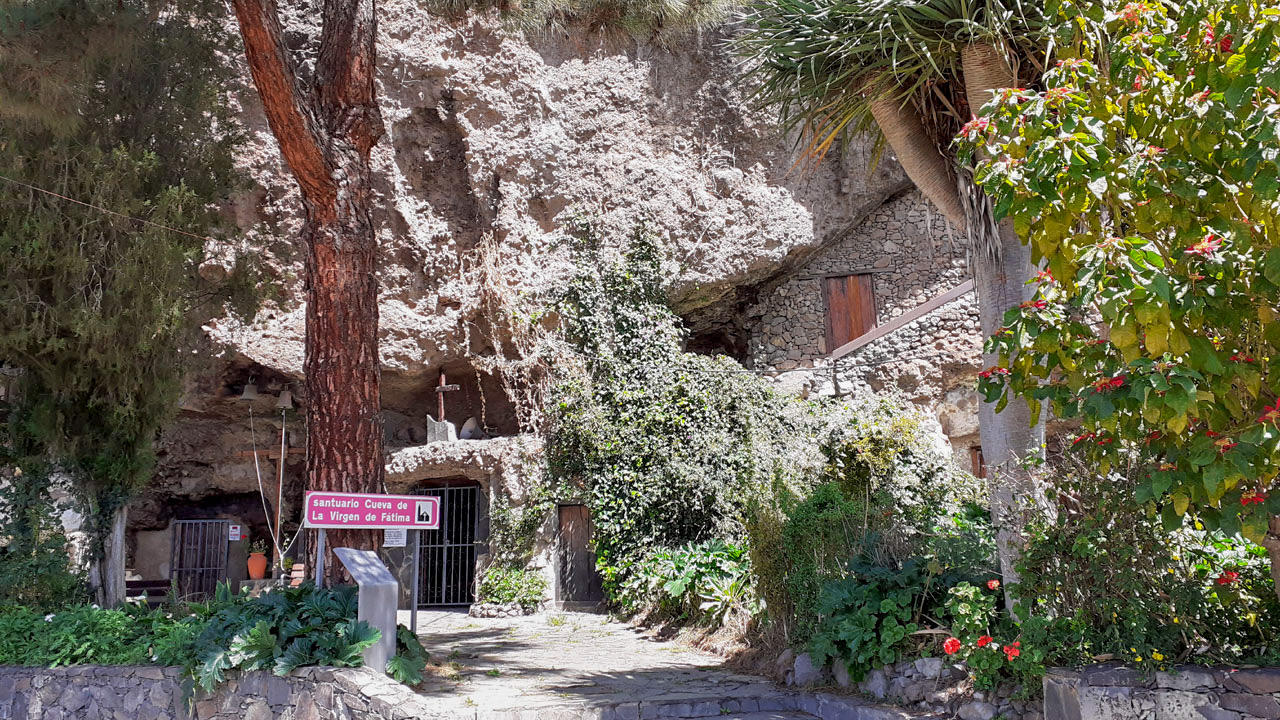
The past provides a lesson pack for current society as we search for a balance between the environment and its inhabitants. This premise guides the Island Institute for Integrated World Heritage Management and the Biosphere Reserve of Gran Canaria: glancing back, taking a deep breath, deliberating, examining the path already trodden, replenishing and examining the horizon before taking the next step. Just like any hiker on one of the paths around the summits of Gran Canaria.
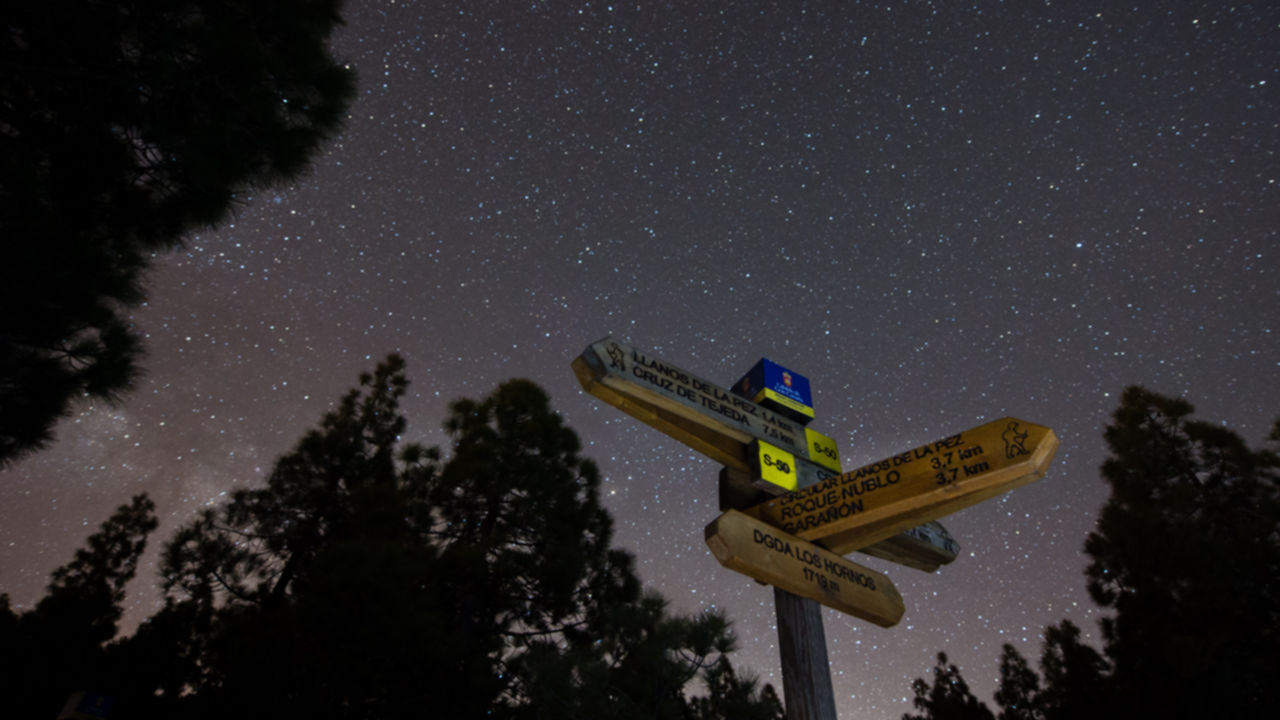
Nowadays, people sleep and dream in the same caves that were inhabited by folk from the past and they also gaze at the stars at night because it is almost impossible not to be spellbound by the summit’s night sky. The invisible thread remains intact between the depth of cave and the cloudscape as its eternal companion.
Paths to follow thousand-year-old traces
The area of the Cultural Landscape is crossed by many paths that offer the ideal way to experience and understand its values. There are many paths and the four mentioned below are accessible for a wide-range of visitors and allow you to visit or give you a great view of the major landmarks. These are routes between Tejeda and Artenara, the circular routes for Tamadaba and Cruz de Acusa-Las Hoyas-Lugarejos-Coruña and the Roque Nublo crossroads. More information on these routes is available in this link.
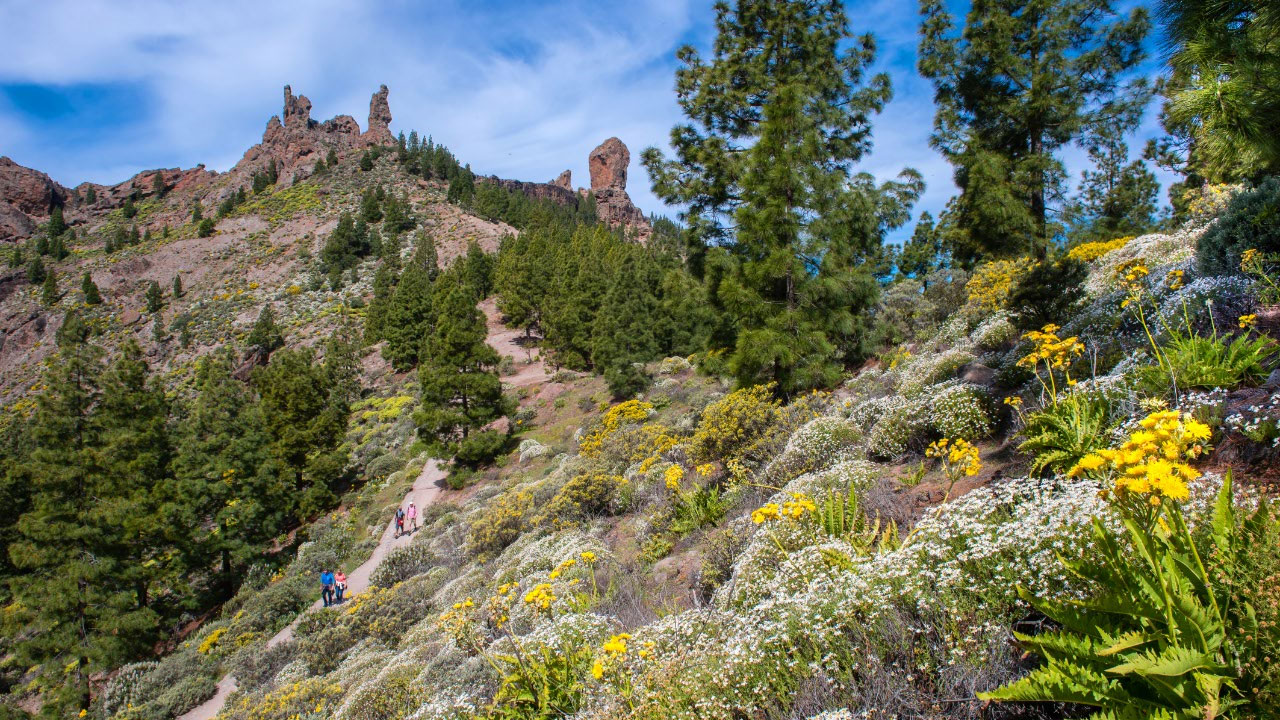
VISITORS’ CENTRES IN THE BIOSPHERE RESERVE AND THE WORLD HERITAGE SITE FROM THE ‘LOST TEMPLE’ TO THE LARGE SETTLEMENT FACING THE OCEAN
Risco Caído and the Sacred Mountains of Gran Canaria Visitors’ Centre
Symbolically excavated into the mountainside, this visitors’ centre is in Artenara and houses the real-size replica of the indigenous society’s so-called ‘lost temple’. This faithful reproduction recreates the beam of light that penetrates the actual cave at certain periods of the year through an opening in its roof and runs across a frieze of etchings. It changes shape and position as the sun moves round during the day and the months, marking the equinoxes and the solstices.
*Monday to Sunday from 10 am to 5 pm.
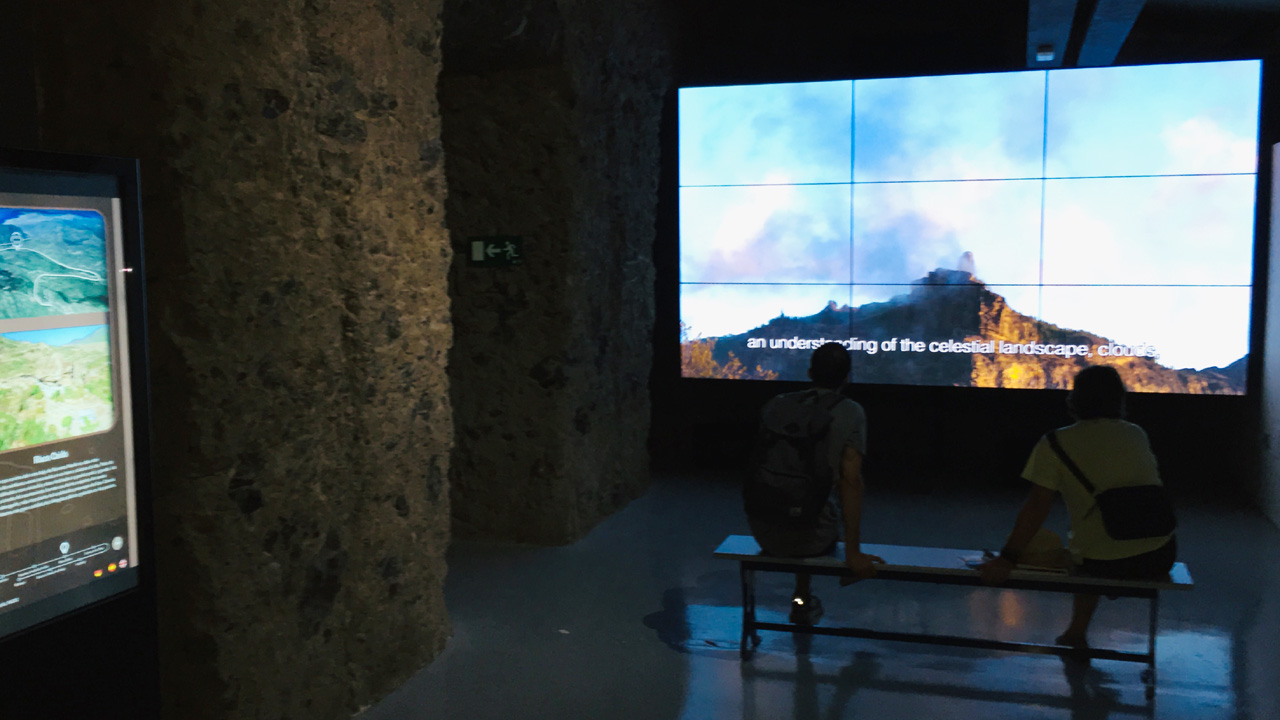
Roque Bentayga Visitors’ Centre
This facility takes a closer look at the cultural, ethnographic and natural traits of the geological and archaeological features that crown Gran Canaria. Furthermore, it is a gateway to discovery regarding the astronomical markers that herald the arrival of the winter solstice.
*Currently closed for modernisation.
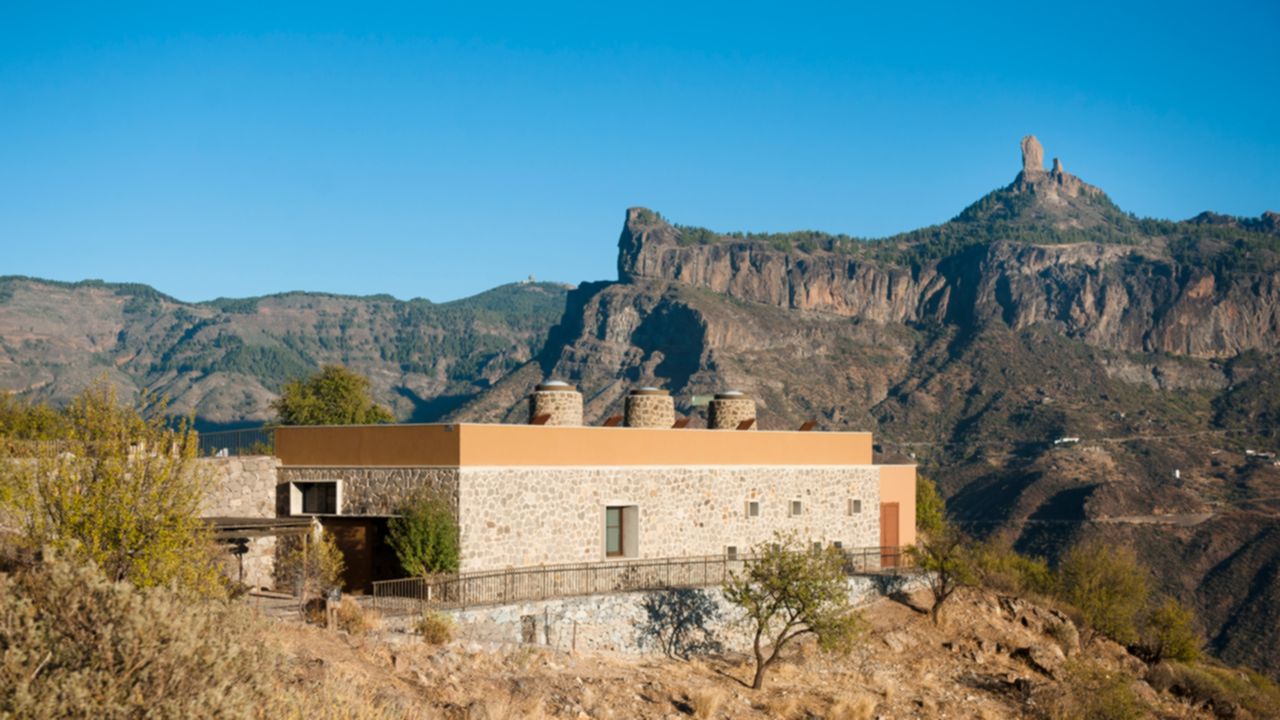
Cultural Landscape Management and Information Centre
This is a traditional Canary building right in the old town of Tejeda, at number 6 on Calle Párroco Rodríguez Vega. Inside, it is divided into several exhibition rooms, including audiovisual content.
*Monday to Sunday from 10 am to 5 pm.
Los Caserones Visitors’ Centre
This building on the La Aldea de San Nicolás shoreline devotes an area to the Biosphere Reserve. Backing from the Biosphere Reserve has made it possible to work on La Marciega wetlands. The Centre provides comprehensive information on the extraordinary archaeological, ethnographic, natural and palaeontological features that converge at the end of the Canary Islands’ largest hydrographic basin. People lived here for a thousand years in one of the most important settlements in ancient Gran Canaria, comprising 800 dwellings at its peak. This brought about unique cultural manifestations many of which are still represented to this day, either already excavated or built on the surface.
*Monday to Sunday from 10 am to 5 pm.

